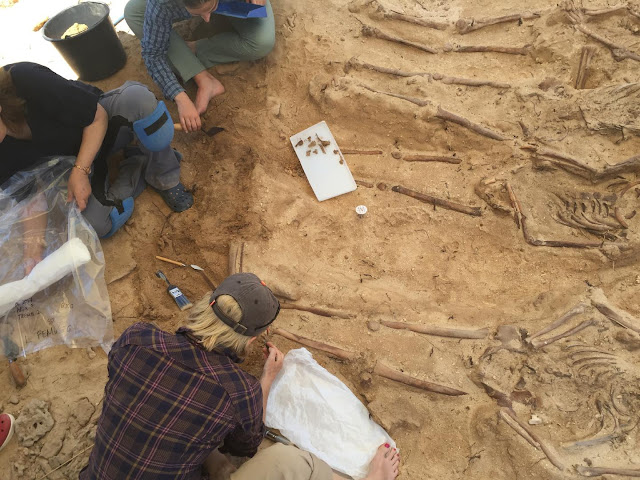An international team of archaeologists, including scientists from The University of Western Australia and the Western Australian Museum, has discovered a new communal grave in the Abrolhos Islands, the result of deaths after a shipwreck of the Dutch East India company ship Batavia.
 |
| An international team of archaeologists has discovered a mass grave consisting of five full skeletons in the Abrolhos Islands off WA, the result of the shipwreck of the Batavia in 1629 [Credit: UWA] |
The communal grave was discovered earlier this month and was made up of five sets of human remains, along with artefacts.
UWA Associate Professor Daniel Franklin said the discovery followed earlier findings on Beacon Island, which is part of the Abrolhos group of islands about 60km west of Geraldton, off WA's mid-west coast.
 |
| The mass grave was discovered on the Abrolhos Islands [Credit: UWA] |
UWA Professor Alistair Paterson, who leads the international collaboration of researchers with Jeremy Green from the WA Museum, said the discovery of the new grave had unearthed vital clues about what happened on Beacon Island almost 400 years ago.
"The communal burial discovered this month suggests careful and respectful burial, not the hurried work of hiding murder victims," Professor Paterson said.
 |
| Ceramic pitcher found at the site [Credit: UWA] |
Dr Liesbeth Smits from the University of Amsterdam, who excavated the latest discoveries, said the bones would now be tested to discover more about them.
"Isotopic analyses are allowing us to determine where these people originated from," Dr Smits said.
 |
| Archaeologists believe the people died after the Batavia became shipwrecked off the coast in 1629 [Credit: UWA] |
Mr Green is Head of Maritime Archaeology at the WA Museum. He has been investigating the Batavia and the story of its survivors since the wreck's discovery more than 50 years ago, and led the excavation of the wreck site in the 1970s.
"This latest find adds significantly to the wealth of information we have on Batavia, and shows that there are still very important discoveries to be made about the remarkable human story behind one of Australia's oldest known shipwrecks," he said.
Source: University of Western Australia [November 23, 2017]
